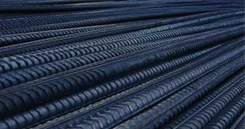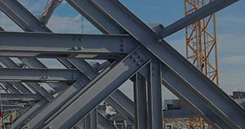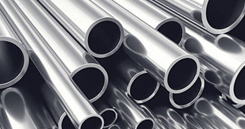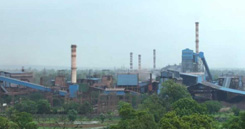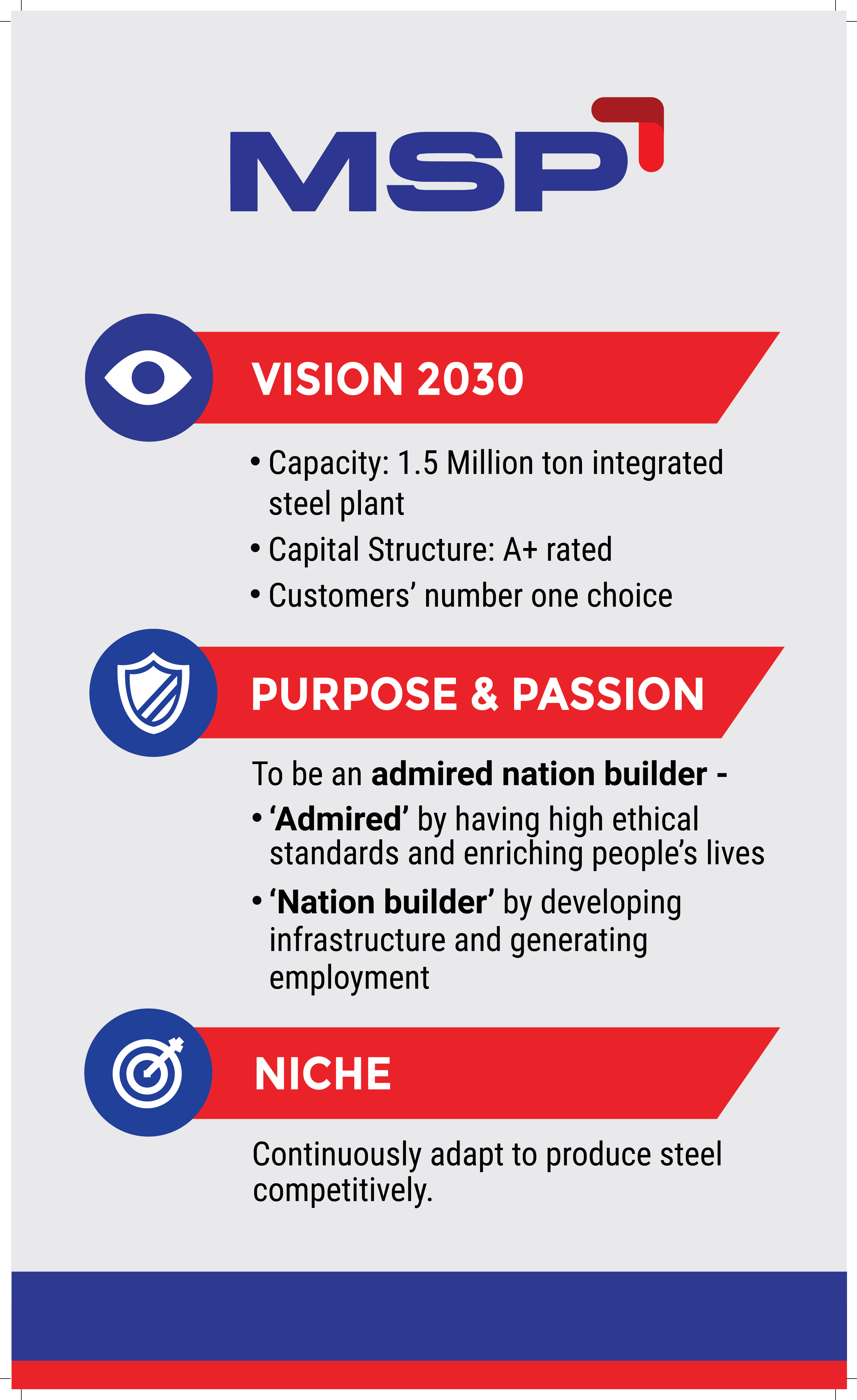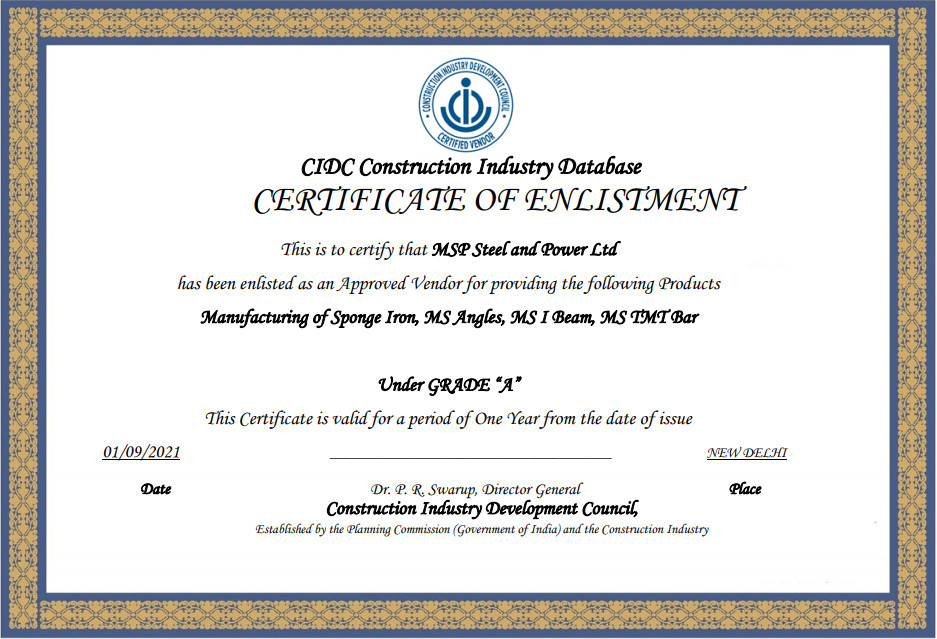
Modern marvels like skyscrapers and bridges owe their strength and form to a revolutionary material: structural steel. This iron-carbon alloy boasts exceptional properties that make it an architect's and engineer's dream.
Structural Steel's exceptional strength is its defining characteristic. Unlike traditional materials, it can withstand immense weight and resist powerful forces like wind and earthquakes. This translates to durable, long-lasting structures – a testament to steel's enduring appeal.
But structural steel's story goes beyond strength. It's a material constantly evolving alongside new technologies and design concepts. From the sleek lines of urban skyscrapers to the intricate curves of modern bridges, structural steel's design flexibility allows for creative solutions. This adaptability empowers architects to push boundaries and craft iconic structures, making steel the perfect canvas for bold designs.
Here are top 5 Reasons Why Structural Steel is the Best?
1. Strength and Durability of Structural Steel
The unmatched strength of structural steel lies in its exceptional material properties, making it a cornerstone in the construction industry. At its core, structural steel is engineered to withstand immense weight and withstand the harsh elements.
Its exceptional resistance to pulling forces, which refers to its ability to resist stretching or pulling forces, is a key attribute. structural steel can also endure tremendous pushing forces, making it ideal for supporting heavy loads, whether in skyscrapers soaring into the sky or expansive bridges spanning great distances.
Furthermore, structural steel’s enduring strength is a hallmark of its resilience. It remains impervious to rust, moisture, and pests, ensuring that structures built with steel can retain their structural integrity for generations for decades if not centuries.
This unique combination of strength and durability enhances the safety and longevity of buildings and offers an economical and environmentally-friendly choice for construction projects of all scales.
2. Steel Titans: Defying the Elements
Structural Steel isn't just for skyscrapers and bridges; it's a champion of resilience, standing strong against a barrage of environmental assaults. Here's why steel structures reign supreme:
- Corrosion Crusaders: Saltwater spray? Industrial fumes? No problem. Steel wears a suit of armor in the form of galvanization or specialized paints, effectively fending off corrosion and ensuring long-lasting structural integrity, even in harsh coastal or industrial environments.
- Fire Tamers: Unlike wood or concrete that crumble under intense heat, steel retains its strength and rigidity for a much longer duration in a fire. This inherent fire resistance makes steel a hero in buildings where fire safety is of paramount importance.
- Earthquake Whisperers: The ground trembles, but steel sways with the punches. In earthquake-prone areas, where absorbing and distributing seismic forces is critical, steel's flexibility shines. It can deform without succumbing, making it ideal for earthquake-resistant designs.
- Wind Warriors: Hurricanes and typhoons pack a powerful punch, but steel takes it in stride. Its incredible strength-to-weight ratio and inherent flexibility allow it to absorb and disperse these forces effectively, minimizing the risk of structural failure.
- Eco-Allies: While not directly related to withstanding environmental factors, steel's eco-friendly nature deserves a mention. It's infinitely recyclable, reducing the need to extract virgin resources and minimizing the construction industry's environmental footprint.
3. Steel Giants: Built to Last a Lifetime
Forget fleeting trends – steel buildings are built for the ages. Here's why steel reigns supreme in the realm of longevity:
- Strength That Endures: Unlike materials that succumb to time, steel boasts unwavering strength. Its inherent durability ensures structural integrity for generations, allowing buildings to weather decades, even centuries, without significant decline.
- A Champion Against Decay: Say goodbye to crumbling concrete and rotting wood. Steel laughs in the face of environmental threats. Its exceptional resistance to degradation minimizes the need for replacements or constant upkeep.
- Sustainable Solution: Longevity isn't just about lasting – it's about environmental responsibility. Steel's enduring nature reduces the need for frequent rebuilding, minimizing resource consumption and the construction industry's footprint.
- Smart Investment, Lasting Value: Steel buildings are a wise financial choice. Their extended lifespan translates to lower long-term costs. Businesses and communities seeking a robust and lasting infrastructure solution need look no further than the enduring strength of steel.
4. Steel Smarts: Building Strong Economics
Sure, structural steel might seem pricier at first glance, but here's why it's a strategic investment that pays off in the long run:
- Time is Money, Steel Saves You Both: Steel's prefabricated nature gets projects up and running faster. This translates to quicker completion, reduced labor costs, and for businesses, earlier occupancy and revenue generation.
- Foundation Friendly: Steel's strength-to-weight ratio is a game-changer. Buildings require smaller, less expensive foundations compared to heavier materials like concrete. This can lead to significant cost savings, especially for projects with complex foundation needs.
- Low-Maintenance Marvel: Forget constant upkeep. Steel's resistance to rot, pests, and degradation means less money spent on repairs and maintenance over the years. Steel buildings are built to last, keeping your wallet happy.
- Design with Savings in Mind: Steel's flexibility allows for creative and cost-effective designs. Engineers can optimize structures to minimize material waste and reduce construction costs. Plus, steel's ability to span larger distances without extra support columns frees up design possibilities and maximizes usable space.
- Eco-Friendly Savings: Steel's recyclability is an economic and environmental win. Steel components can be easily recycled and reused in new projects, minimizing disposal costs and environmental footprint.
In short, steel construction offers a smart economic package - faster completion times, lower foundation costs, minimal maintenance needs, design flexibility, and eco-friendly benefits that translate to long-term savings.
5. Steel: The Sculptor's Choice in Construction
Forget cookie-cutter buildings! Structural steel empowers architects to be artists. Here's why:
- Strength Meets Flexibility: Steel's unique combination of being incredibly strong yet highly adaptable allows for a mind-boggling range of designs. Architects can create awe-inspiring structures that would be impossible with other materials.
- Spanning the Dream: Steel's high strength-to-weight ratio is a game-changer. It can stretch across vast distances without needing a forest of support beams. This opens up expansive interior spaces and unleashes creative freedom for architects.
- A Shape-Shifting Canvas: Unlike rigid materials, steel bends to your will. It can be effortlessly molded into any form, allowing for intricate details and unique aesthetics. From the flowing curves of a modern museum to the clean lines of a high-rise office building, steel brings architectural visions to life.
- Pushing the Boundaries: Architects who crave innovation reach for steel. It empowers them to push the limits of design and create iconic structures that become landmarks and conversation starters.
In short, structural steel is the ultimate medium for architects seeking design freedom and flexibility. It's the perfect blend of strength, adaptability, and endless design possibilities, making it the sculptor's choice in construction.
Iconic Steel Buildings with Innovative Designs
Several iconic buildings worldwide showcase structural steel's remarkable design flexibility and innovative potential. Here are a few notable examples:
- Eiffel Tower, Paris, France: The Eiffel Tower, constructed in 1889 for the Exposition Universelle (World’s Fair), is an enduring symbol of Paris and an early demonstration of the power of structural steel. Its lattice-like structure, consisting of iron girders, showcases the elegance and strength of steel while reaching a height of 324 meters.
- Sydney Opera House, Australia: Designed by Danish architect Jørn Utzon, the Sydney Opera House is an iconic example of how structural steel can be used to create a unique and imaginative design. Its distinctive sail-like shells are constructed using precast concrete segments supported by a network of steel ribs.
- Burj Khalifa, Dubai, UAE: The Burj Khalifa, the world’s tallest skyscraper, incorporates structural steel in its design. Its central core houses the elevators, utilities, and stairwells and is reinforced concrete. However, the steel exoskeleton surrounding the core provides structural support and contributes to the building’s distinctive appearance.
- Bird’s Nest (National Stadium), Beijing, China: The Bird’s Nest stadium, designed for the 2008 Beijing Olympics, is a marvel of steel architecture. Its intricate and complex structural system, resembling a bird’s nest, was created using thousands of tons of steel.
- The Shard, London, UK: Renowned as one of London’s most iconic modern skyscrapers, The Shard features a glass-clad exterior with a central steel spire. The steel framework provides structural stability while allowing for the creation of its distinctively angular and crystalline design.
Wrapping Up
In conclusion, structural steel offers a winning combination of strength, design flexibility, cost-effectiveness, speed of construction, and eco-friendliness. For architects, engineers, and builders seeking a high-performance and sustainable material, structural steel stands out as the clear choice for a wide range of construction projects.









